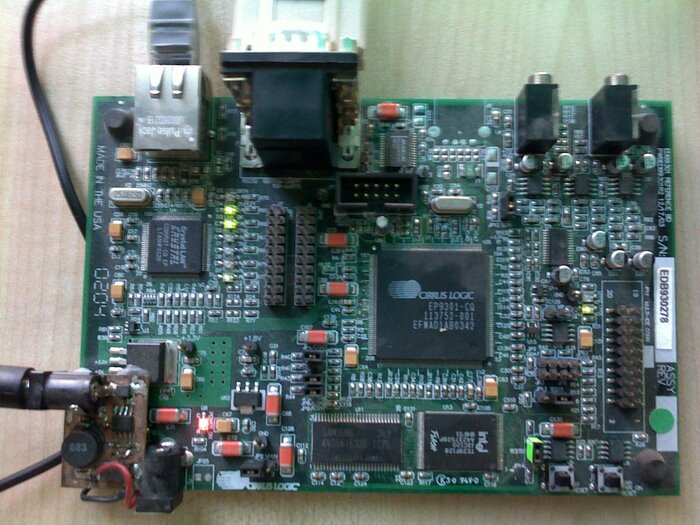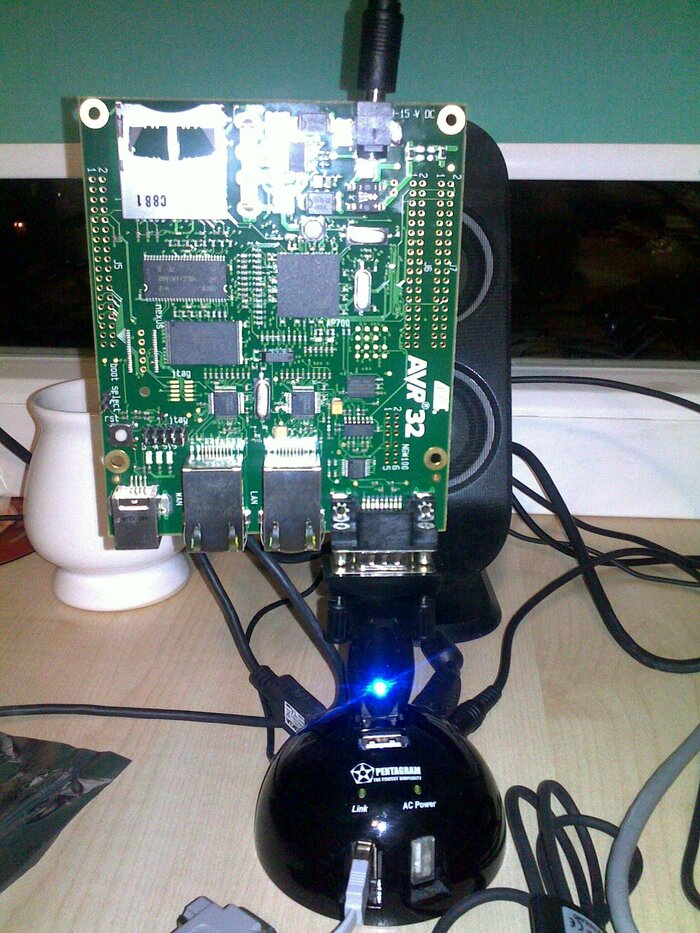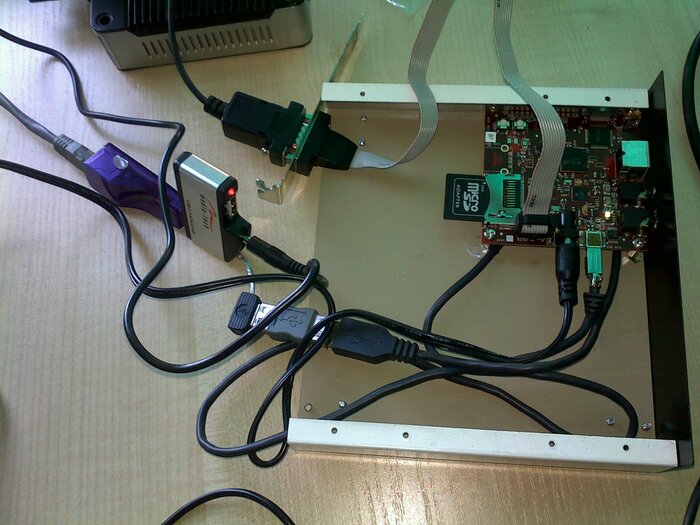Today I visited friend at his office and during talk I found dusted EDB9301 board at shelve. As he do not use it any more I was allowed to take it for experimenting.
First problem was bootloader — I am not so familiar with RedBoot so it took me a while to get it to load kernel from TFTP server. For reference: proper command is "load -v -r -b 0x01000000 /zImage-ep9301" where “/zImage-ep9301” is name of file to fetch. If you will get “Unrecognized image type: 0xe1a00000” message instead then you forgot “-r” switch (RedBoot do not know format of zImage kernel). I got some hints from HitchHacker Guide to ENP-2611 page.
Second was Linux kernel as support for EDB9301 was not present in 2.6.29 version. Quick search on LAKML gave me patch which adds EDB9301 support. But even with this patch kernel does not wanted to boot due to different machine ID (454 instead of 462) — small patch to “arch/arm/tools/mach-types” solved problem :D
Now I have board booted with root over NFS and wait for “base-image” build to end to have rootfs which will fit that device better then Openmoko one ;D


